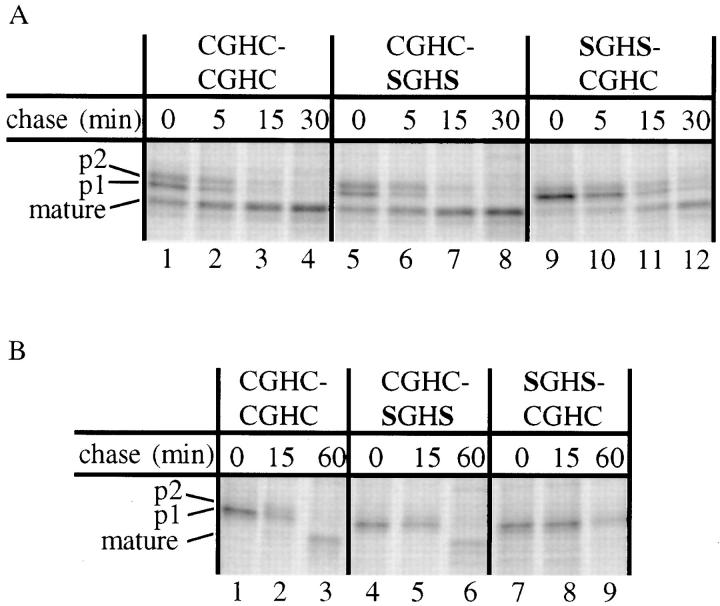Figure 2.
Inactivation of the PDI a domain results in reduced rate of CPY maturation and inability to recover from DTT treatment. (A) Cells were pulse-labeled with 35S-labeled amino acids for 15 min and chased with nonradioactive sulfur for the indicated periods of time. Intracellular CPY was immunoprecipitated, separated by 8% SDS-PAGE, and exposed to PhosphorImager screens. Mutants are identified according to the sequence of their CXXC motifs. (B) Cells were pulse labeled for 20 min as described above, but in the presence of 5 mM DTT. They were then washed with unlabeled DTT-free medium and chased in this medium for the indicated periods of time. The SGHS-CGHC mutant is not able to oxidize and mature p1-proCPY (lane 9), while the wild type (lanes 1–3) and the CGHC-SGHS mutant (lanes 4–6) show similar maturation rates. In accordance with earlier observations (Simons et al., 1995; Holst et al., 1996), the rate of maturation is considerably slower after treatment with DTT. A partial degradation of the CPY antigen, like the one seen in this experiment, is often found under folding defective conditions (Ramos and Winther, 1996).

